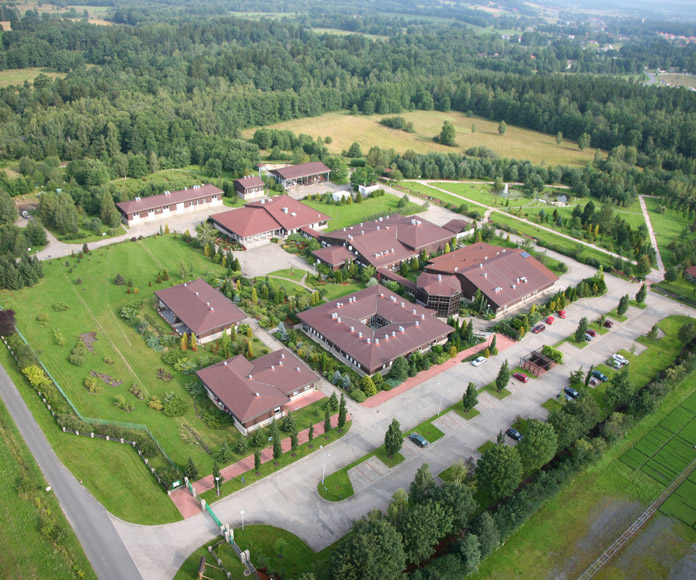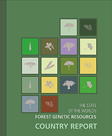
National coordinator
Czesław Kozioł58 540 Karpacz, Poland
Quick Info
Letter of Agreement for Phase VII signed on 09 Dec 2024
Member since 1994
Letter of Agreement for Phase VII signed on 09 Dec 2024
Member since 1994The European Information System on Forest Genetic Resources (EUFGIS) provides geo-referenced and harmonized data on genetic conservation units of forest trees in Europe.
Abies alba (18)
Acer pseudoplatanus (1)
Alnus glutinosa (15)
Betula pendula (7)
Fagus sylvatica (30)
Fraxinus excelsior (2)
Larix decidua (24)
Picea abies (15)
Pinus nigra (3)
Pinus sylvestris (41)
Pseudotsuga menziesii (23)
Quercus petraea (22)
Quercus robur (29)
Quercus rubra (2)
Robinia pseudoacacia (2)
Tilia cordata (9)
 | Safeguarding seeds in the deep freezeThe Kostrzyca Forest Gene Bank in Poland recently opened a new facility for storing seeds at very… |
The total area of forests in Poland is about 9 177 thousand hectares, which puts forest cover at 29.4 %. In the ownership structure of forests in Poland the majority (81.2 %) are publicly-owned, of which 77.2 % are under the administration of the State Forests National Forest Holding (the State Forests). With a large area of forests and standing volume exceeding the European average, Poland has significant timber resources which amount to more than 2.3 billion m3.
Forests in Poland mainly occur in areas with the poorest soils, which determines the structure of forest habitat types. Coniferous forest habitats predominate, accounting for 51 % of the total forest area, while broadleaved forest habitats account for 49 %.
The geographical distribution of habitats is largely reflected in the spatial structure of dominant tree species. Apart from the mountain regions where Norway spruce, silver fir and European beech have a larger share in stand composition, in the rest of the country Scots pine is the dominant species (59.1 % of the area of forests in all ownership categories).
During the recent decades the species structure of Polish forests has changed substantially, which is evident in the increased share of stands with the prevalence of broadleaved species. In the State Forests, where these changes are monitored annually, the increase was from 13 % to 23.4 %. In Poland, forest stands of native species dominate, reaching up to 99,6 %)
Forests in Poland fulfill diverse functions, either naturally or as a result of human activities:
Forests in Poland are protected by a variety of nature and landscape conservation measures. The highest level of protection is given to national parks, which are currently 23 and cover an area of 314.6 thousand hectares, of which 195.0 thousand hectares (62 %) are forests. The 1480 nature reserves cover an area of 165.7 thousand hectares, of which 95.6 thousand hectares are forests. The majority of nature reserves (1271) are administered by the State Forests.
The areas of Natura 2000 network cover about 20 % of the country’s land area. Within the State Forests, Special Protection Areas for birds (SPAs) cover 2205 thousand hectares (29.1 % of the State Forests territory) and Sites of Community Importance (SCIs) - 1640 thousand hectares (21.7 %).
In the total area of forest stands under special protection over 204 279 hectares of stands are designated as the seed base which supplies material for maintaining native ecotypes of forest-forming species in our forests. The State Forests also initiate their own programmes aimed at maintaining biological diversity and protecting and restoring endangered species of flora and fauna.
Two registers of forest basic material have been established in Poland:
The objects registered in both registers serve the in situ conservation of forest genetic diversity in forests under all ownership categories.
According to the National Register of Forest Basic Material, Poland has:
Several of the EUFORGEN Technical Guidelines have been translated into Polish, published by Leśny Bank Genów Kostrzyca, http://www.lbg.lasy.gov.pl/.
You can download them below.
Abies alba (748 KB)
Acer campestre (713 KB)
Acer pseudoplatanus (701 KB)
Alnus glutinosa (739 KB)
Betula pendula (955 KB)


Picea abies Network: Report of the first meeting

Picea abies Network: Report of the second meeting

Populus nigra Network: Report of the fifth meeting
Scattered Broadleaves Network: Summary of the third meeting

Conifers Network: Report of the second and third meeting

Populus nigra Network: Report of the fourth meeting

Noble Hardwoods Network: Report of the second meeting